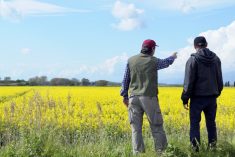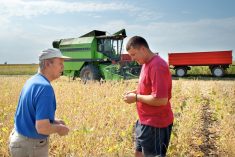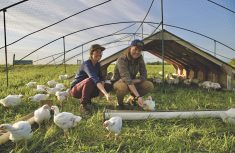Dan Needles is the author of “Wingfield Farm” stage plays. His column is a monthly feature in Country Guide
just stumbled upon a study done a few years ago by American researchers who examined the different ways people look at the countryside. They found that city people respond warmly to rolling hills and small fields
enclosed by rail fences, Victorian houses, bank barns and a rich variety of livestock. Farmers, on the other hand, were attracted by neat farmyards with lots of gravel, big modern buildings, huge flat fields and uniform crops stretching away to the horizon.
Read Also

Employment Agreements Can Help Protect Your Farm
Entering into employment agreements with each of your farm employees should be at the top of every farm’s “to do” list, but caution must be exercised.
There were a few areas of overlap. Both the city people and the farmers agreed they really liked that ancient two-banger tractor with the fresh coat of paint still pulling a hay wagon. And they all liked the sight of kids doing manual labour. Who wouldn’t?
Out here on the Petunia Valley Sideroad we offer a farmstead for every aesthetic. The Pargeter Brothers operate a farmer’s farm down on the highway. They have the endless flat fields and giant steel silos so tall that a broadband Internet provider has located
its radio antenna on one of them. Rows of new combines and tractors line the gravel parking lot, which is bigger than the parking lot for Wal-Mart in town. The Pargeters’ annual output would give food self-sufficiency to a small African republic. Three families, the Pargeters, the Bells and the Fortescues now account for about 80 per cent of the township’s agricultural production
I share a line fence with Vern and Elma Bunton, the last mixed farmers in the township. Their farmstead would remind the Pargeters of how they started out 25 years ago. Two hundred acres, a 35-cow dairy barn, three used tractors, a front yard and large open drive shed jammed to overflowing with farm machinery, snowmobiles, trailers, their children’s cars and the school bus Vern’s wife drives every day. Vern and Elma would produce enough milk, beef and pork to stock the Port Petunia supermarket for several months.
At the top of the hill you have Heidi Pargeter’s goat dairy, which has the lively look of a productive New Wave “fringe” farm. The hedgerows are still there and the front gate sports all sorts of signs advertising goat soap and other organic products. Her output keeps hundreds of families healthy and scrubbed clean all year. Across the road from her on the highest, windiest drumlin in Persephone Township is the cattle farm of Owly and Howly Drysdale. Fifty cows roam the thistles and sand looking for a bite to eat. After a century of producing freezer beef for the neighbourhood, there isn’t a tree left standing on 300 acres. (Although Owly owns much more than that because the farm is all up on its edge and he can pasture both sides.) The place looks like the Khyber Pass in Afghanistan.
Then there’s my place, right in the middle of the sideroad. Anyone who didn’t have to worry about producing food would think it was absolutely darling. I have the rolling fields and the tumbled down apple trees. I have the drafty Victorian house and sagging outbuildings that inspire legions of watercolour artists. Gentle sheep and softly lowing cows graze among the old barn foundations abandoned two generations ago by a thoroughly disgusted farm family who were sick of drinking sulphurous water and knocking the snow off their bedclothes on winter mornings. (They moved into town, took up a career in the concrete business and never looked back.) My net annual food exports would total about $50, mostly in the form of jars of jam and a few frozen chickens handed out as Christmas presents.
If city people want the countryside to look more like my place, they better start planting a garden on the roof of their condominiums, because food is going to be mighty scarce. My farm looks terrific to urbanites partly because it doesn’t have to do very much. Its primary purpose is to be looked after. The machine I use most frequently is a lawn mower, the only four-wheeled vehicle that gets worse gas mileage than a Hummer. We may achieve a kind of food self-sufficiency as a family, but if the whole planet tried to farm this way, 40 per cent of the population would die of starvation.
I think Elma Bunton captures it best when she says in her matter-of-fact and diplomatic way, “It takes all kinds to make a world.”














